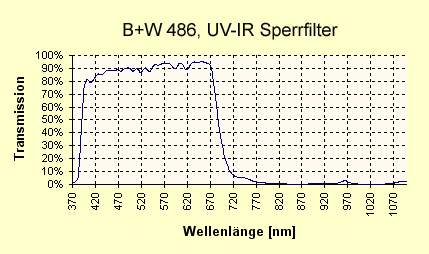Fantastic! Looking specifically at the red part of the spectrum, it seems that one might encounter issues here. First, the input from the magenta dyes will end up in the green channel as well, because the green filter is not at 0%, but somewhere above the 10% mark. Second, both the white-light LED as well as the Sony IMX477 feature a fall-off, starting at 600 nm for the sensor and at about 640 nm for the LED. That is about the same wavelength were the magenta dye is starting to become relevant (with diffuse spectral density going over 90%).
Indeed, I encountered some time ago issues with the color definition of intense reds using the HQ camera - albeit with a discreet RGB-LED setup (not a white-LED). Now, replacing the stock IR-Filter with a better one resulted in improved color definition.
The blueish stock IR-Filter is responsible for the linear fall-off in the red channel of the Sony IMX477 starting at 600 nm. Here’s the plot of the IR-filter of the Raspberry Pi HQ camera measured by myself (the Raspberry Pi foundation published a very similar filter curve some time ago, but I can not find their data on their website any longer):
One can clearly see how strong the filter blocks light in the red color parts. Just for fun, I replaced the stock IR-fitler with this one,
which resulted in a better color definition in the red part of the spectrum (at least in my setup).

